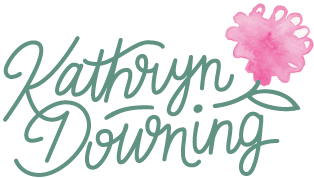Combining Mobile Apps
For years, Hy-Vee customers had been using the Hy-Vee mobile app. It allowed them to view weekly ads, create a shopping list and refill pharmacy prescriptions. This app had been developed by an outside agency and received very little internal support, except for technical updates to keep it running.
In June of 2019, the Hy-Vee Aisles Online mobile app was launched. This app was created specifically for grocery pickup and delivery ordering. For our Aisles Online customers, the ability to scan barcodes and use voice search added convenience, in addition to the easy access to check order status on the go.
Our challenge was to explore whether we could design an app interface that would contain features of both apps, yet still be easy for our customers to use.
Concept Exploration
Due to timeline and resourcing constraints we engaged an agency for the exploratory designs. As UX Manager, my responsibilities were to oversee the work and fill in any gaps.
Participated in stakeholder ideation and prioritization workshops
Reviewed and provided feedback on design concepts
Recruited, scheduled and compensated participants for the agency’s moderated usability study
At the end of the engagement with the agency, we had four navigational concepts for a single app. They used feedback from 15 customer participants to support their recommendation.
An image showing the home screen of four different mobile app concepts.
Quantitative study
Leadership wasn’t convinced, so I was asked to plan another study with a much larger participant pool. My goals were to:
Quantify insights gained from the previous qualitative study.
Identify top tasks for users of both apps, and compare.
Understand what customers like and don’t like about each concept.
Test specific component differences between the concepts.
Concept 1 garnered the highest ratings for likeability and relevance. It also performed well in first-click testing. But there was more work to do. The concept lacked a persistent menu, making it unclear how to get back to the home screen.
Want more detail?
From Concept to Reality
Leadership decided to go in the direction of Concept 4. This meant we needed to iterate and incorporate the best elements from the concepts.
Business Decisions
There was a desire to increase visibility of pharmacy within the app. Pharmacy was located under "My Account". The ask was to remove “Lists” from the tab menu to make room for “Health”.
Marketing wanted the home tab of the app to NOT be “Shop” in the future. Instead, "Home" would contain discoverable content and promotions. This meant another tab needed to be removed from the menu. It had been proposed that "Account" would be removed.
Navigation Refinement
While other team members focused on the design of the new home and health screens, I took on reworking the header and footer of the app – building and testing multiple prototypes to make sure customers would still able to easily find shopping lists and account details.
Three concurrent prototype usability studies were run. Each task began in the prototype location where the previous task finished, rather than reset to the home screen for each task. This was to gain better insight into how participants navigated back from areas within the prototype.
Prototype A - My account is not in the tab menu. Instead it is an icon at the top next to cart
Prototype B - My account is in the tab menu, list icon is next to cart in the header
Prototype C - My account is in the tab menu, message center is next to cart in the header
Study Findings
Participants were able to complete tasks for all three designs with a high success rate. My recommendation was Prototype A because it freed up an additional tab space without making task completion significantly harder. Other observations:
The account icon was clearly recognized without a label
The message notification counter draws the eye to it so people easily find it
New users see other features under Account that they recall and find more easily on subsequent tasks
Some participants did not look at items in either the header or tab menu completing tasks.
I suggested we feature saved lists in content, for those who use that feature.
Displaying some deals, but not all, in “Home” and “Shop” content caused participants to waste time looking for an ad that could only be found within “Deals”
